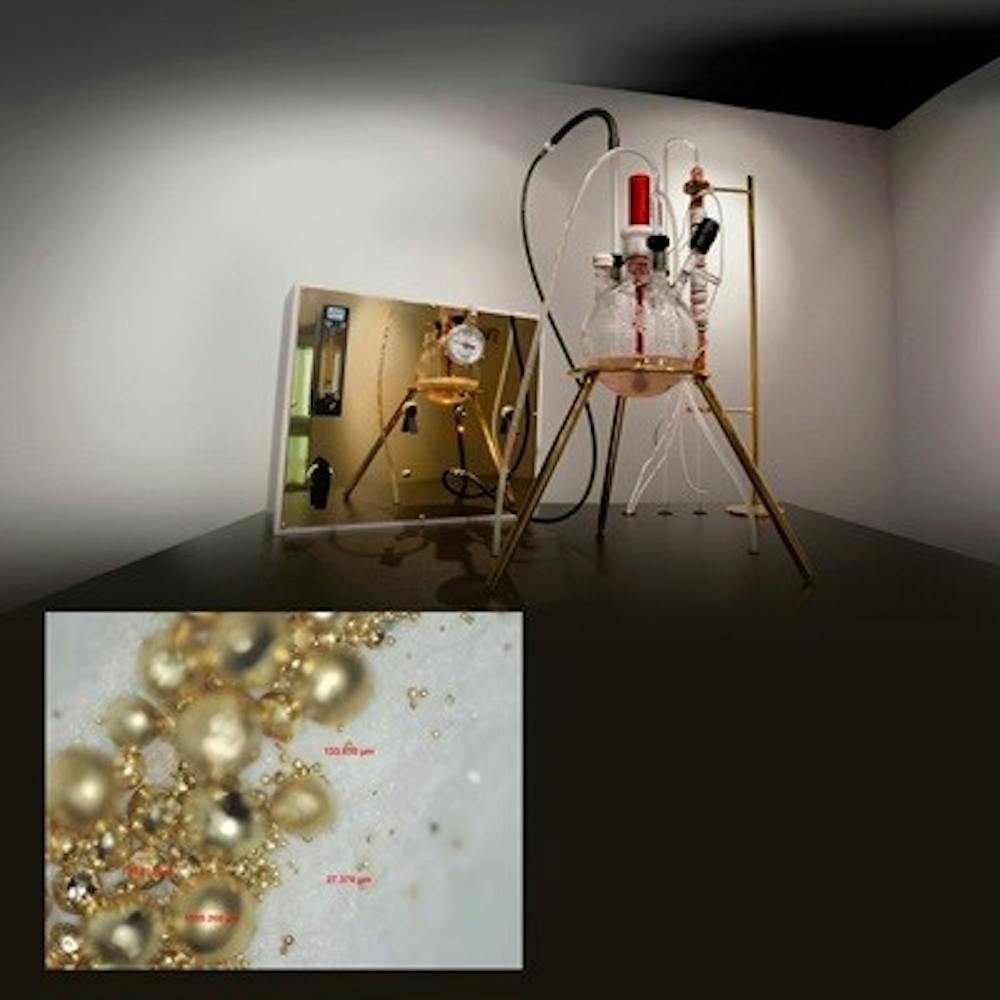Science collides with art through displays of a robot’s masterpiece, chemical reactions, augmented reality, audible message decoding and more at the David Owsley Museum of Art’s exhibit Engaging Technology II: Art + Science.
The exhibit features various works by internationally renowned artists and Ball State’s Institute for Digital Intermedia Arts lab, where science and art are melded together to demonstrate their relationship.
“I think that everyone believes science, technology, engineering and math are the way of the future, but without an art component, you lose this sense of wonder, beauty and creativity that can contribute just as much to the STEM stuff as the STEM things can contribute to art,” said Robert La France, director of DOMA.
In the museum, located at the beginning of the exhibit, is an opportunity for guests to take out their iPhones and interact with a sign. When holding an iPhone up to the sign, an augmented reality, created by IDIA lab director John Fillwalk and the rest of the IDIA lab, with miniature paper airplanes comes to life.
Immediately after the augmented reality is “Hydrogeny,” a piece by Evelina Domnitch and Dmitry Gelfand. Underlying electrical currents split atoms of water molecules into hydrogen and oxygen, creating thousands of tiny bubbles moving upwards in slow motion. As the bubbles move upward, a white laser creates the illusion that they are twinkling.
Further into the exhibit is a computerized-artist who has been drawing for the past 144 hours non-stop. Tristan Perich programmed this artist and then attached a string with a black marker that draws straight patterns and scribbles.
The machine will run the entire time the exhibit is on display, Sept. 28 to Dec. 22, and by December, the white wall it draws on will be almost entirely covered by the marker’s black ink.
Fillwalk said the artists in this exhibit are “trying to paint the picture exactly where technology and science have been integrated with art all along.”
“[Art and science] are fairly inseparable, we just don’t think of it that way,” Fillwalk said. “This exhibition is a way to view that tradition, but from a contemporary lense so we brought in artists that are more clearly dealing with the relationships between art and science.”
The Art + Science exhibit is meant to bring a “different flavor” to a past exhibit, which focused on the history of “intermedia,” Fillwalk said.
La France said the exhibit evokes wonder and has a modern sense because past, present and future are represented and “science and technology is the cutting-edge, and some of these artists are playing with these things that we don’t fully understand yet.”
Because the exhibit features so many different subjects, Rachel Buckmaster, assistant director of DOMA, said there is something for everyone, not just art majors.
The Ball State and Muncie community are encouraged to visit the museum, which is free, and see all of the exhibits on display when experiencing first-hand creative ways that art and science can be brought together.
“This exhibit is especially engaging, because it’s a multisensory experience,” Fillwalk said. “You’re trying to decode it intellectually, but at the same time they’re quite beautiful so you have an aesthetic experience.”
Contact Melissa Kraman with comments at mmkraman@bsu.edu.





